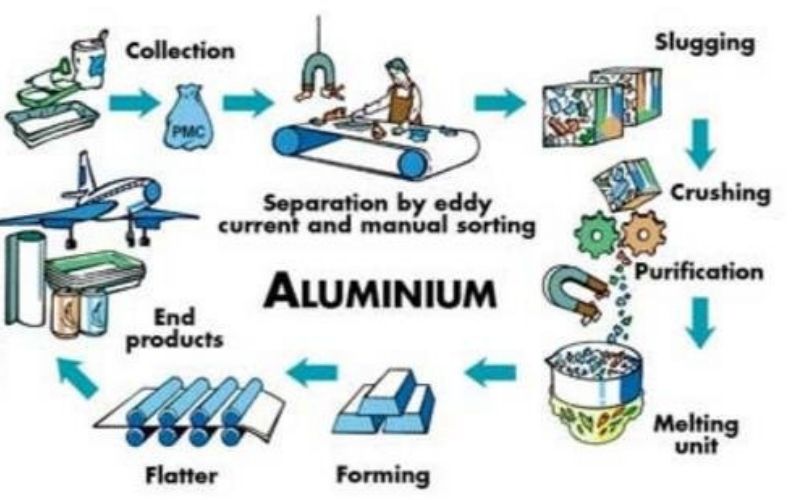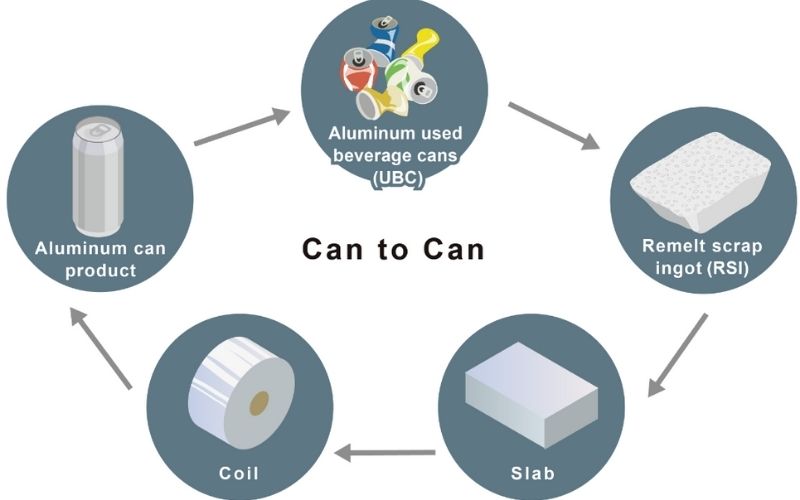Is Aluminum Recyclable?
Aluminium is an important metal known for its recyclability. Durable, lightweight and ideal for many industrial applications, aluminium stands out as a sustainable material. Recycling is the process of collecting, processing and using waste aluminium products in the production of new products. This process plays a critical role in reducing environmental impacts, conserving natural resources and providing economic value. However, an effective infrastructure and conscious consumer behaviour are needed for aluminium recycling. In this article, we will focus on the advantages and necessity of aluminium recycling. Is Aluminum Recyclable, let’s learn it.
As American Aluminum extrusion company we know that aluminium is one of the most valuable metals in the world. We proceed in this direction while producing aluminium extrusion profiles. We use aluminium, which can be recycled many times in production. Now let’s examine how aluminium is recycled, what is the importance of aluminium for recycling and what is the process.
How to Recycle Aluminium?
Aluminium recycling is an important process to reduce environmental impacts, conserve natural resources and extend the useful life of aluminium, an economically valuable material. Aluminium is a metal that is durable, lightweight and ideal for many industrial applications. However, the amount of energy required to produce this material is high and consumes natural resources. Recycling is the process of reprocessing waste aluminium products, using this energy and resources in an economical way. In this process, used aluminium products are collected, melted, reshaped and used in the production of new products. This provides a sustainable approach from both an environmental and economic point of view.
Aluminium Recycling Process in 6 Steps

Aluminium can be recycled infinitely, which is why aluminium is actually an excellent material for recycling. It is possible to recycle aluminium by liquefying and melting it and then pouring the liquid aluminium into new objects, reshaping them and putting them into production.
- Collection End-of-life aluminium products are sent to recycling facilities or collection points.
- Sorting: The collected scrap aluminium products are subjected to a sorting process to separate them from other metals and contaminants.
- Melting: The separated aluminium products are sent to melting furnaces and melted at high temperatures.
- Refining: During the melting process, impurities and contaminants present in the molten aluminium are removed.
- Casting: The purified aluminium is poured into specific moulds in casting machines and brought back to the desired form and dimensions.
- Reuse or Production: The aluminium products obtained after the casting process can be reused or used in the production of new aluminium products.
This process helps to save energy and conserve natural resources by reusing waste aluminium.
How many times can aluminium be recycled?

Aluminium is a material that can be recycled repeatedly and the recycling process does not affect the quality of the aluminium. In general, the number of times aluminium can be recycled depends on the technology used and the quality of the recycling facilities. However, it is an accepted fact that aluminium can be recycled an unlimited number of times. This feature increases the value of aluminium and helps to conserve natural resources.

Bor Aluminum – Content Producer






